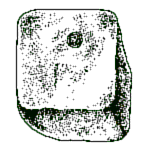Early cleavage divisions in most embryos are reductive, i.e., they divide the original contents of the oocyte/egg without a concomitant increase in the total cellular volume of the embryo. This means that (a) the average diameter of a cell decreases as cleavage continues, and (b) there is a huge increase in surface area relative to cellular volume. You can perform a little "back of the envelope" calculation to see how the surface area of an array of block-shaped cells increases in a situation where the divisions are completely reductive, starting with an embryo that is the diameter of a sea urchin zygote (about 100 micrometers for common species). After the third cleavage, the surface area has roughly doubled! While this calculation is a bit biased, it nevertheless points up the challenge faced by an embryo undergoing reductive cleavages. For the numerate, the calculation is pretty much the same for spherically shaped cells, as one finds in echinoderm embryos. Click on the button to change the number of cells...
